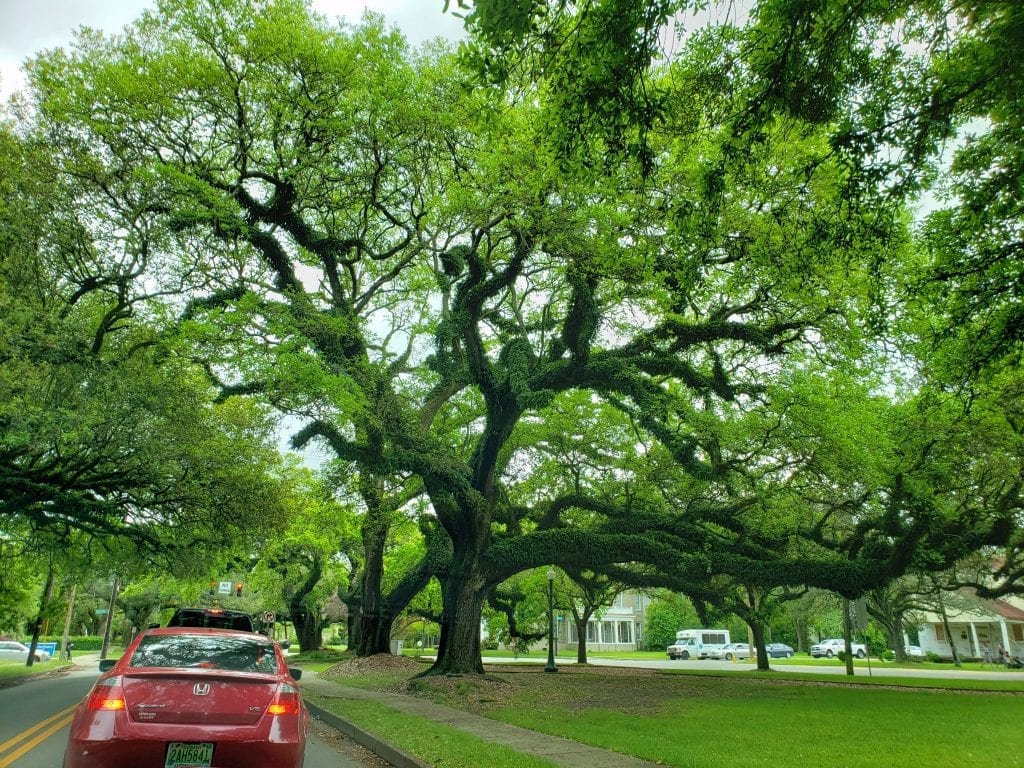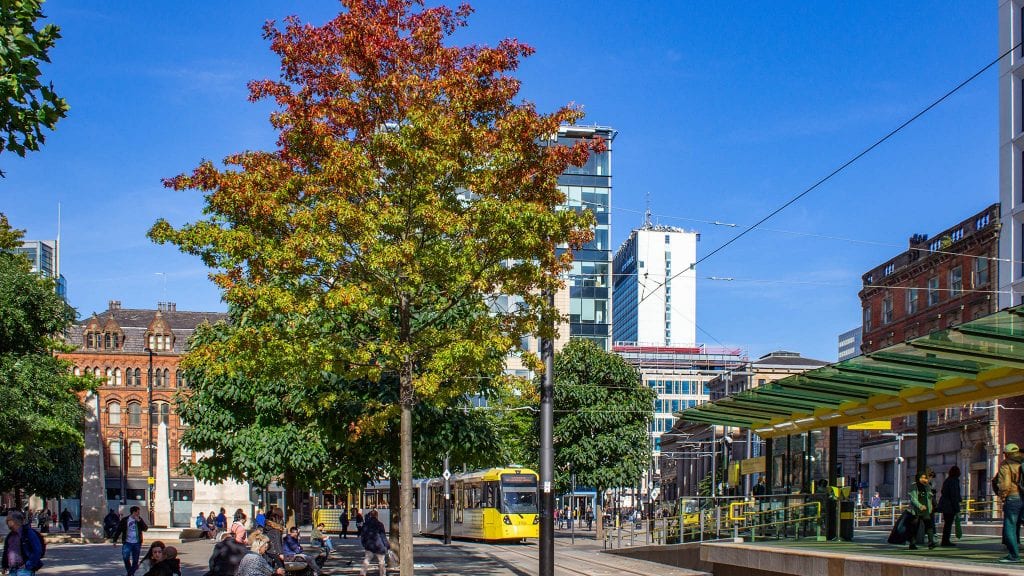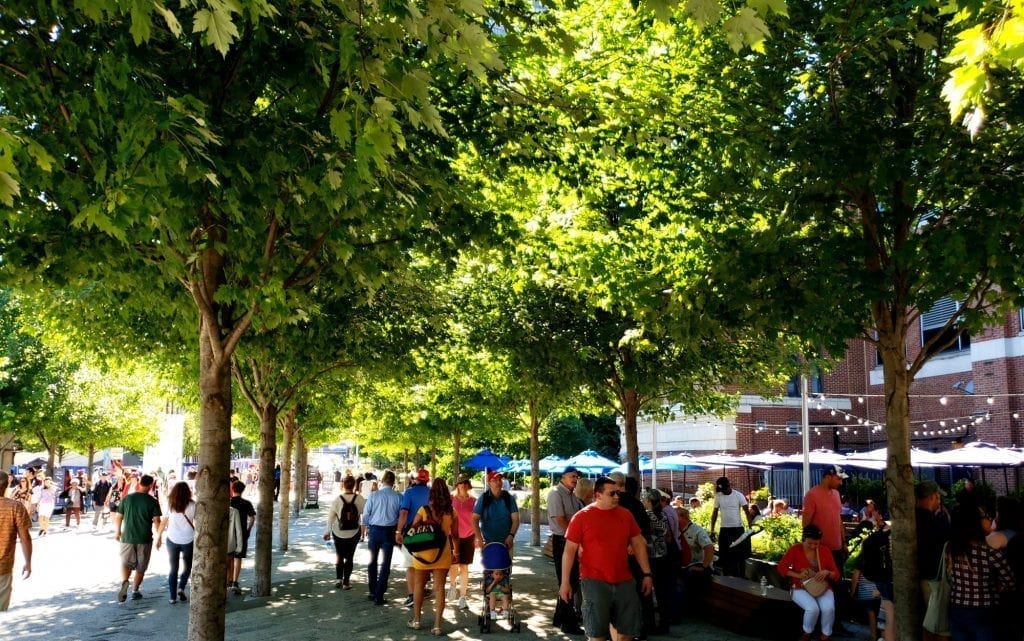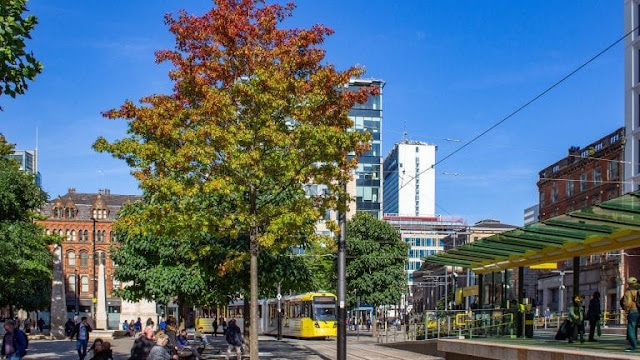Τι είναι αστικό δάσος?
Η αστική δασοκομία είναι ένας όρος με τον οποίο πολλοί από εσάς θα γνωρίζετε ήδη. Αλλά τι εννοούμε πραγματικά όταν μιλάμε για το αστικό δάσος;
Η κατανόηση των σχετικών ορισμών είναι σημαντική επειδή οι άνθρωποι έχουν διαφορετικές ερμηνείες για το τι αποτελεί το αστικό δάσος. Εννοούμε τα δέντρα του δρόμου; Ή μια συγκεκριμένη δασική έκταση σε μια αστική περιοχή; Περιλαμβάνουμε θάμνους, γκαζόν ή πάρκα;
Ο ίδιος ο όρος «Αστικό Δάσος» μπορεί να φαίνεται οξύμωρος, με τη χρήση δύο προφανώς αντιφατικών όρων. «Πώς μπορεί μια περιοχή να είναι ταυτόχρονα αστική και δασική;» κάποιοι ρωτούν. Λοιπόν, στην πραγματικότητα μπορεί και γι 'αυτό…
Πρώτον, ωστόσο, υπάρχουν δύο κύριες ερμηνείες του τι συνιστά «αστικό δάσος».
Το πρώτο βλέπει το άθροισμα όλων των αστικών δέντρων, συμπεριλαμβανομένων εκείνων που βρίσκονται σε πάρκα ή σε δρόμους, τόσο σε ιδιωτική όσο και σε δημόσια γη, και θεωρεί επίσης οπωρώνες, φράκτες και άλλους χώρους πρασίνου στην υπό εξέταση αστική περιοχή, ως συλλογικό «αστικό δάσος» (Βλέπε Grey and Deneke’s Urban Forestry,για παράδειγμα).
Το δεύτερο αναφέρεται στο αστικό δάσος ως μεμονωμένες μονάδες σε μια αστική περιοχή και στο Εγχειρίδιο του Evans's Forest περιγράφεται έτσι, «Τα αστικά δάση μπορούν να οριστούν από την τοποθέτησή τους μέσα ή κοντά σε αστικές περιοχές»Αυτός ο δεύτερος ορισμός αναφέρεται σε ξεχωριστές περιοχές δασικών εκτάσεων εντός αστικής περιοχής ως αστικό δάσος, τον «στενό» ορισμό. Αν και δεν είναι τεχνικά λανθασμένο, κατά την άποψή μου, αυτή είναι μια λιγότερο χρήσιμη ιδέα, καθώς διαχωρίζει το «αστικό» από το «δάσος» και απλοποιεί την χωρική σχέση μεταξύ των δύο, υπονοώντας ότι μπορούν πράγματι να διαχωριστούν.
Προτιμώ πολύ τον ευρύτερο ορισμό που δίνεται από τον Sands (στο Forestry in a Global Context), ο οποίος αναφέρει:
«Το αστικό δάσος είναι το οικοσύστημα που περιέχει όλα τα δέντρα, τα φυτά και τα συναφή ζώα στο αστικό περιβάλλον, τόσο εντός όσο και γύρω από την πόλη».
Ο Deneke (Grey and Deneke’s Urban Forestry) φτάνει στο σημείο να λέει ότι «οι πόλεις είναι δάση» και από τον ορισμό των Ηνωμένων Εθνών (γη με κάλυψη στεφάνης δέντρων άνω του 10% και έκταση άνω των 0,5 εκταρίων) οι περισσότερες πόλεις και αστικές περιοχές θα μπορούσαν πράγματι να χαρακτηριστούν ως δάση.
Άρα, ίσως ήρθε η ώρα να σταματήσουμε να σκεφτόμαστε τα δέντρα στις πόλεις μας, και στην πραγματικότητα να εξετάζουμε τις πόλεις στα δάση μας. Αυτό δεν είναι καθόλου νέο ιδανικό, και οι επισκέπτες του Άμστερνταμ του 17ου αιώνα συχνά σχολίασαν ότι δεν μπορούσαν να πουν εάν βρίσκονταν σε μια πόλη ή σε ένα δάσος.
Ο John Evelyn (συγγραφέας της Sylva - ένα από τα πρώτα τεχνικά έργα πάνω σε δέντρα) επισκέφθηκε το 1641 και εντυπωσιάστηκε πολύ από την περιοχή που είναι γνωστή ως Keisers-Graft,
«… Που φαίνεται να είναι μια Πόλη σε ένα Δάσος, μέσα από τις καλές Αλέες από εντυπωσιακά και καταπληκτικά δέντρα , ακριβώς φυτεμένα πριν από κάθε πόρτα».
Τελικά, λαμβάνοντας υπόψη αυτόν τον ευρύτερο ορισμό του αστικού δάσους και αρχίζοντας να σκεφτόμαστε τις πόλεις στα δάση μας, αυτό πραγματικά φέρνει τα δέντρα (το μεγαλύτερο συστατικό της πράσινης υποδομής μας) στο προσκήνιο.
Αυτό είναι ιδιαίτερα σημαντικό δεδομένης της αυξανόμενης αστικοποίησης σε όλο τον κόσμο, διότι με την ενσωμάτωση του ρόλου του αστικού δάσους σε στρατηγικές μακροπρόθεσμου προγραμματισμού και προσαρμογής του κλίματος, μπορούμε να εργαστούμε στη σωστή κλίμακα για να δημιουργήσουμε χώρους που είναι απλά καλύτεροι για τις κοινότητες να ζουν, να εργάζονται και παίζουν.
[Ο Kenton Rogers είναι Chartered Forester και συνεργάτης της Βασιλικής Γεωγραφικής Εταιρείας με μεταπτυχιακό στη διαχείριση δασικών οικοσυστημάτων. Είναι επίσης συνιδρυτής της Treeconomics, μιας κοινωνικής επιχείρησης που συνεργάζεται με δημόσιους φορείς, ερευνητικούς οργανισμούς, κοινότητες και εμπορικές επιχειρήσεις, για να αναδείξει την αξία των δέντρων.]
Μεταφραση :Κωστας Τάτσης
What is an Urban Forest?
Guest Post – Kenton Rogers – Treeconomics
Urban Forestry is a term which many of us will already be familiar with. But what do we actually mean when we talk about the urban forest?
Understanding the definitions involved is important because people have different interpretations of what constitutes the urban forest. Do we mean the street trees? Or a specific woodland in an urban area? Do we include shrubs, lawns or parks?

The very term ‘Urban Forest’ can seem oxymoronic, the use of two apparently contradictory terms put together. “How can an area be simultaneously urban, and forest?” some ask. Well, actually it can, and this is why…
Firstly though, there are two main interpretations of what constitutes an ‘urban forest’.
The first looks at the sum of all urban trees; including those situated in parks or in streets, on both private and public land, and also considers orchards, hedges and other green spaces across the urban area under consideration, to collectively make up an ‘urban forest’ (See Grey and Deneke’s Urban Forestry, for example).

The second refers to the urban forest as individual units within an urban area and in Evans’s Forest Handbook is described thus, ‘Urban forests can be defined by their placement in or near urban are-as’.
This second definition refers to distinct areas of woodland within an urban area as urban forest, the ‘narrow’ definition. Although not technically incorrect, in my view this is a less helpful concept as it separates out the ‘urban’ from the ‘forest’ and oversimplifies the spatial relationship between the two, implying that they can indeed be separated.
I much prefer the broader definition given by Sands (in Forestry in a Global Context), which states;
‘The urban forest is the ecosystem containing all of the trees, plants and associated animals in the urban environment, both in and around the city’.
Deneke (in Grey and Deneke’s Urban Forestry) goes so far as to say that ‘cities are forests’ and by the United Nations definition (land with tree crown cover of more than 10 percent and an area of more than 0.5 hectares) most cities and urban areas could indeed be classed as forests.

So, perhaps it’s time that we should stop thinking about the trees in our towns, and actually consider the towns in our forests instead. This is by no means a new ideal, and visitors to 17th century Amsterdam often remarked that they could not tell if they were in a city or a forest.
John Evelyn (author of Sylva – one of the very first technical works on trees) visited in 1641 and was very impressed by the quarter known as Keisers-Graft,
‘…which appears to be a City in a Wood, through the goodly ranges of stately and umbrageous Lime trees, exactly planted before each mans doore’.
Finally then, considering this broader definition of the urban forest, and starting to think about the towns in our forests, this really brings trees (the largest component of our green infrastructure) to the fore.
This is particularly important given increasing urbanisation across the globe, because by incorporating the role of the urban forest into long term planning and climate adaptation strategies, we can work at the right scale to create spaces which are simply better for communities to live, work and play.
Kenton Rogers is a Chartered Forester and Fellow of the Royal Geographical Society with a Masters in Forest Ecosystem Management. He is also co-founder of Treeconomics, a social enterprise that engages with public bodies, research organisations, communities and commercial businesses, to highlight the value of trees.
GreenBlue are pleased to collaborate with such high level industry partners – having worked with Kenton to produce our Cost Benefit Analysis guide with continued collaboration to follow.
πήγη: https://greenblue.com/gb/what-is-an-urban-forest/



Δεν υπάρχουν σχόλια:
Δημοσίευση σχολίου